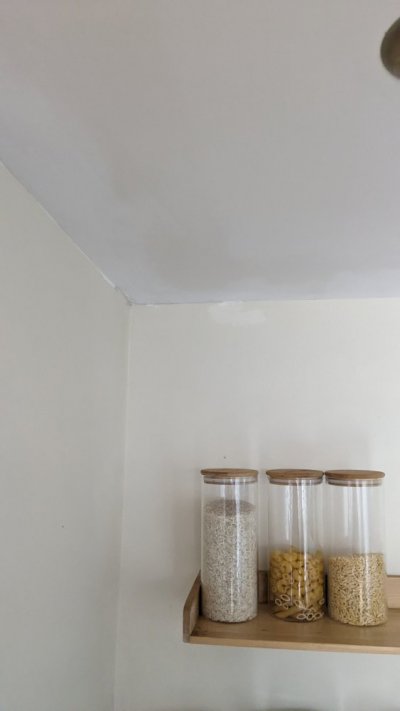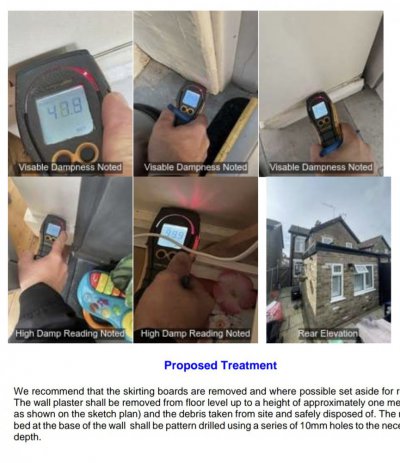Henryc
Member
- Messages
- 8
- Location
- sjcict1234
Hi- we're FTB of a Victorian 19th century end terrace property and have recently completed a L3 survey which highlighted some concerns. One of these concerns was high meter readings for dampness in the party wall on the ground floor.
We had therefore requested a visit and quote from a damp specialist (changed to the damp proofing company in the following posts) who after inspection quoted £8k for the chemical injections, tanking as well a removal of skirting/ replastering etc- which did seem excessive after reading some posts online. We also understand that often times this will cause more harm than good in a lot of period properties to impact breathability and force the dampness elsewhere (i.e. other side of the wall or worse through the ground).
1- is this true with a lot of period properties and how significant can this dampness be/ become? There are plenty of posts which suggest finding the source of the dampness is the key thing here but how do we go about this especially as we don't yet own the property and mindful that the current owners may not agree to any invasive methods to investigate?
2- is the quote genuinely unreasonable and may not hold up well as a negotiation tool? We're considering getting a independent damp surveyor (one who doesn't need to push sales of these injections etc)- has anyone had experience of getting a more realistic and accurate report this way? If so what kind of costs on average should we expect for such a survey/ inspection as (the inspection from the damp proofing company) was free.
Any feedback on how best to proceed would be much appreciated!
We had therefore requested a visit and quote from a damp specialist (changed to the damp proofing company in the following posts) who after inspection quoted £8k for the chemical injections, tanking as well a removal of skirting/ replastering etc- which did seem excessive after reading some posts online. We also understand that often times this will cause more harm than good in a lot of period properties to impact breathability and force the dampness elsewhere (i.e. other side of the wall or worse through the ground).
1- is this true with a lot of period properties and how significant can this dampness be/ become? There are plenty of posts which suggest finding the source of the dampness is the key thing here but how do we go about this especially as we don't yet own the property and mindful that the current owners may not agree to any invasive methods to investigate?
2- is the quote genuinely unreasonable and may not hold up well as a negotiation tool? We're considering getting a independent damp surveyor (one who doesn't need to push sales of these injections etc)- has anyone had experience of getting a more realistic and accurate report this way? If so what kind of costs on average should we expect for such a survey/ inspection as (the inspection from the damp proofing company) was free.
Any feedback on how best to proceed would be much appreciated!
Last edited by a moderator:


